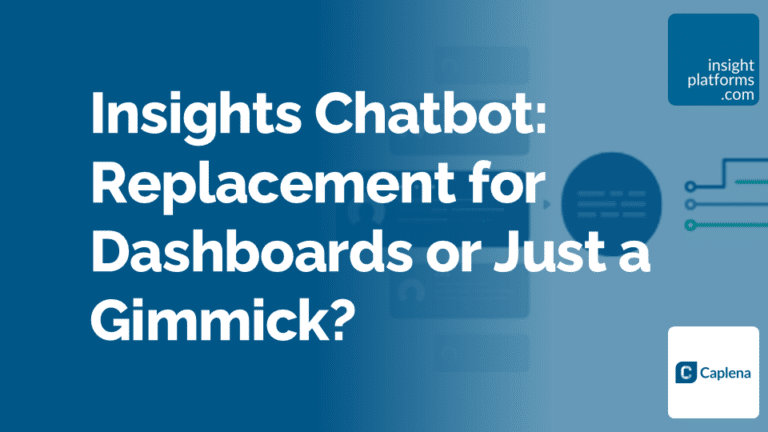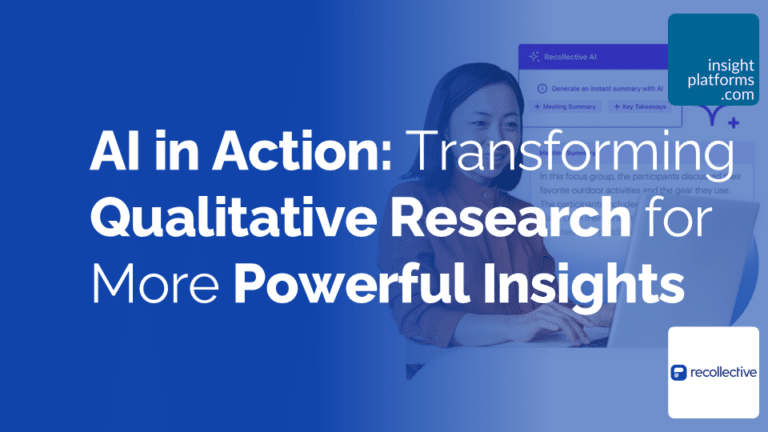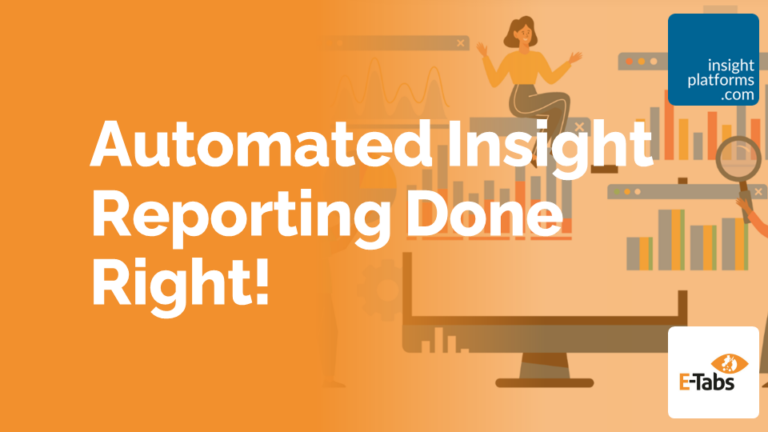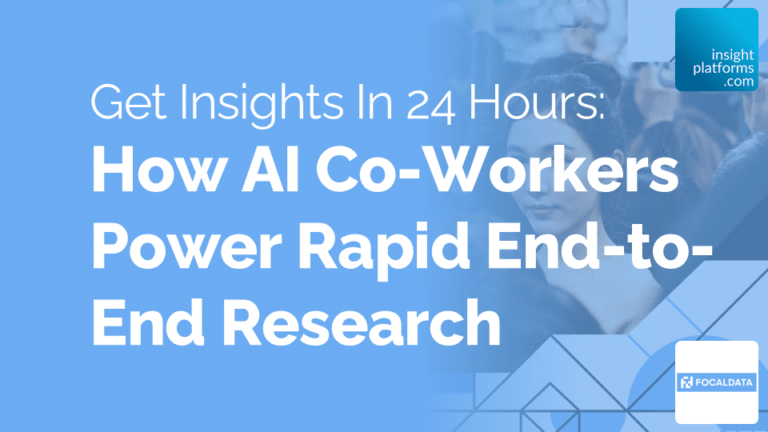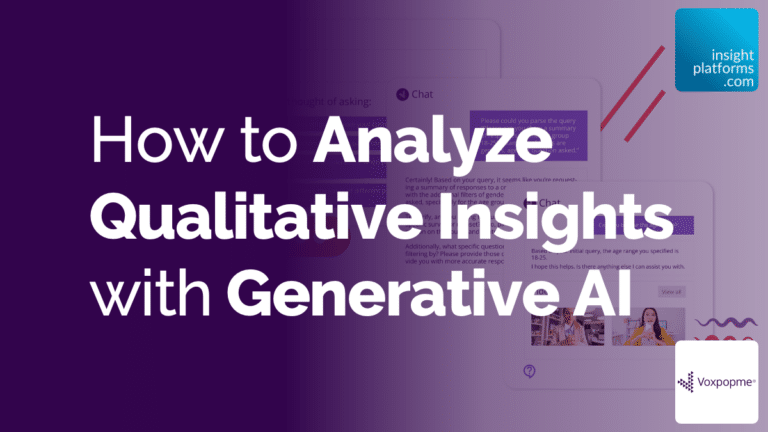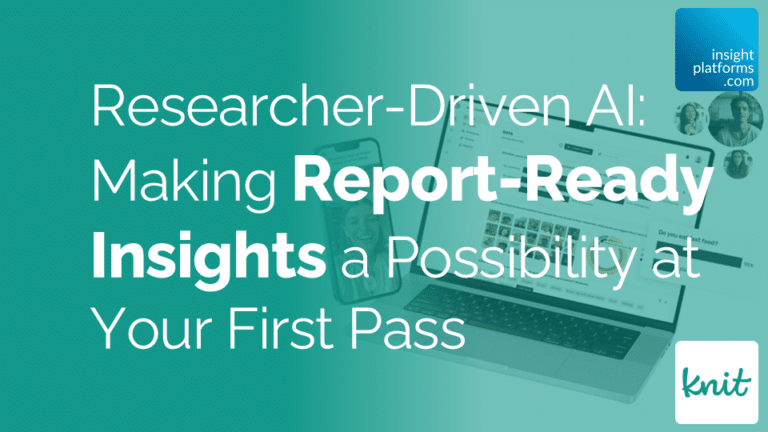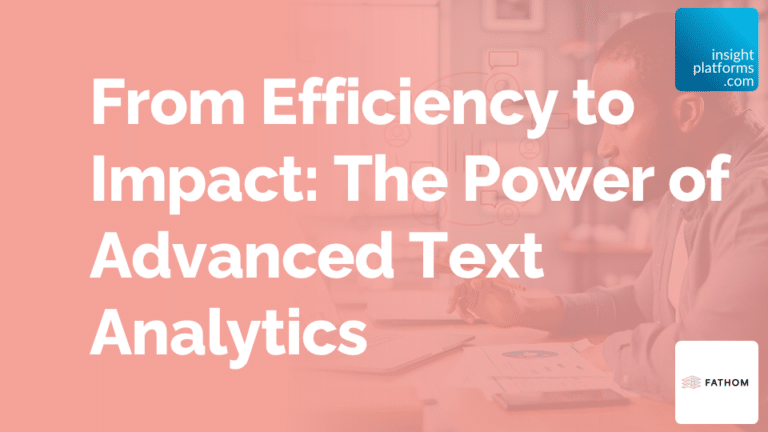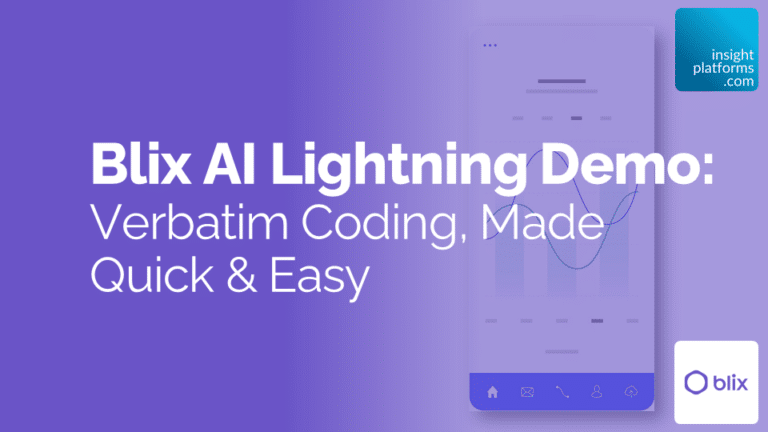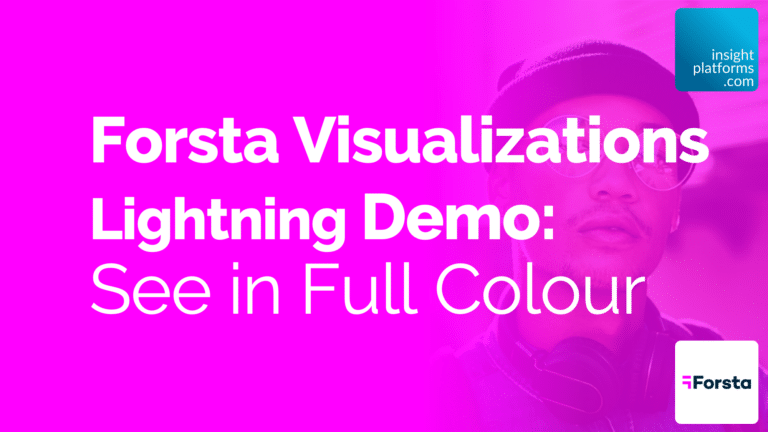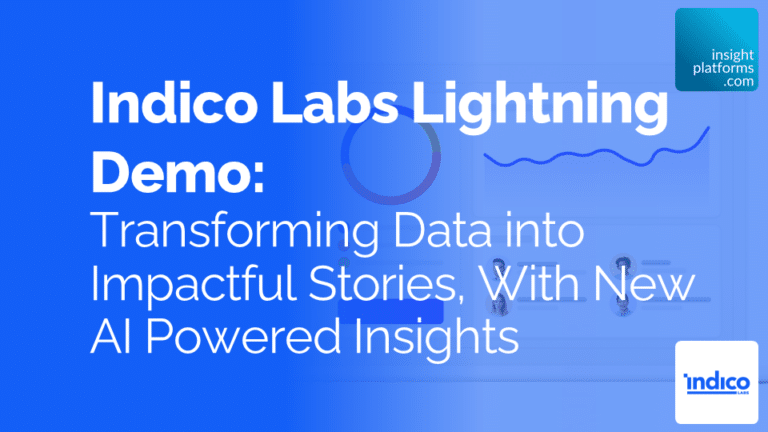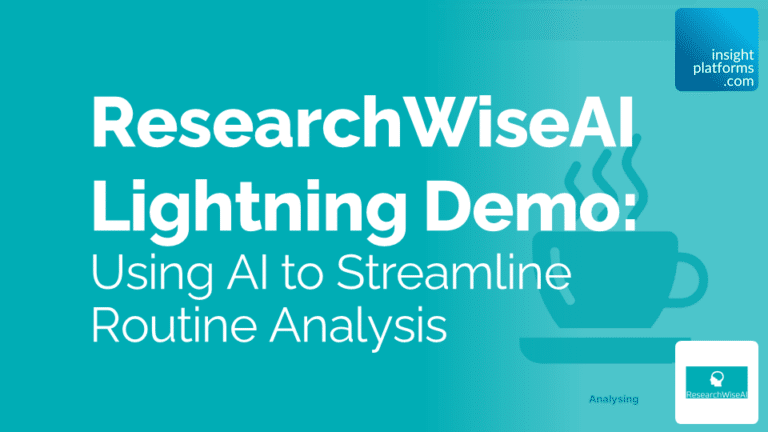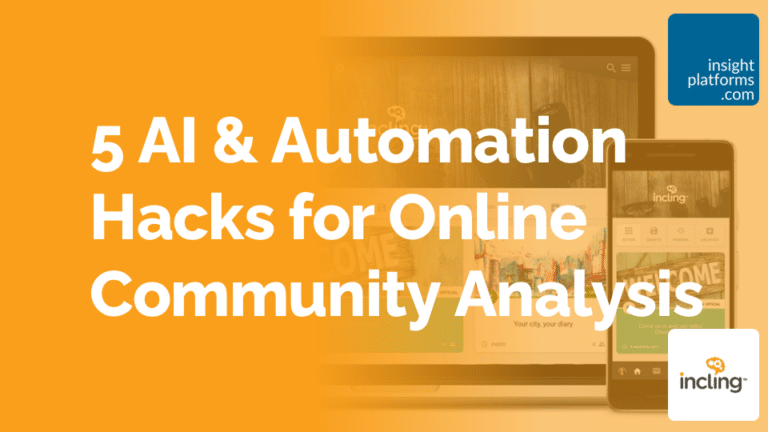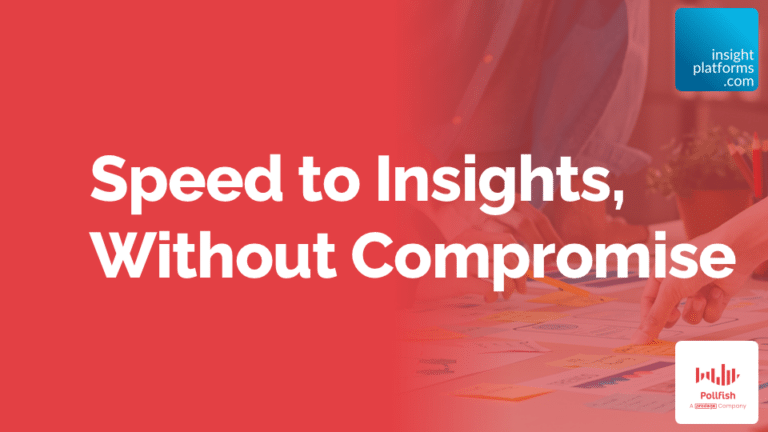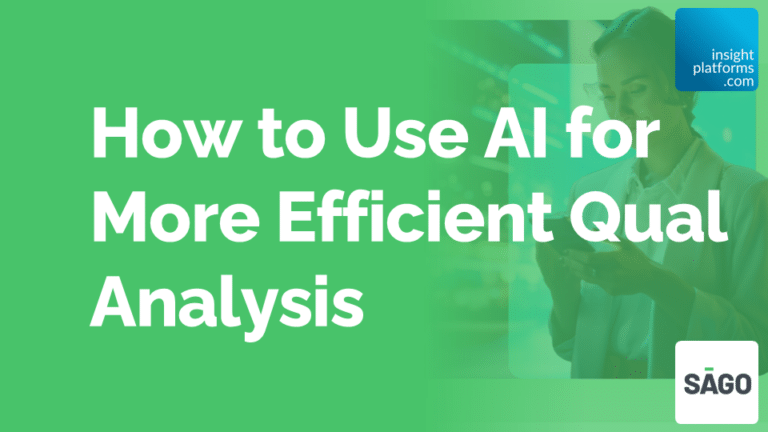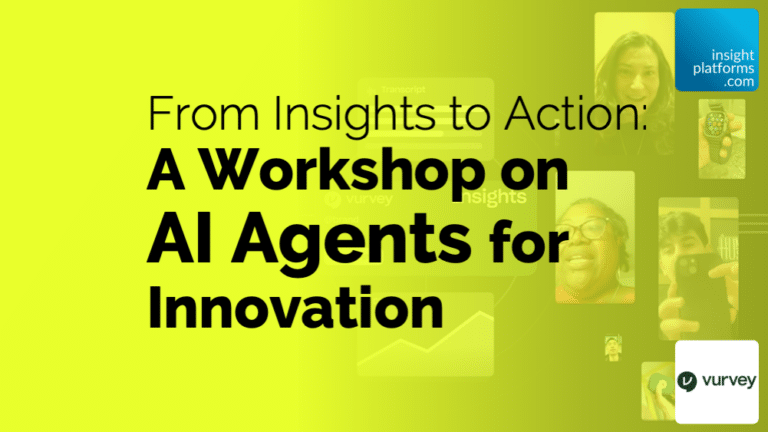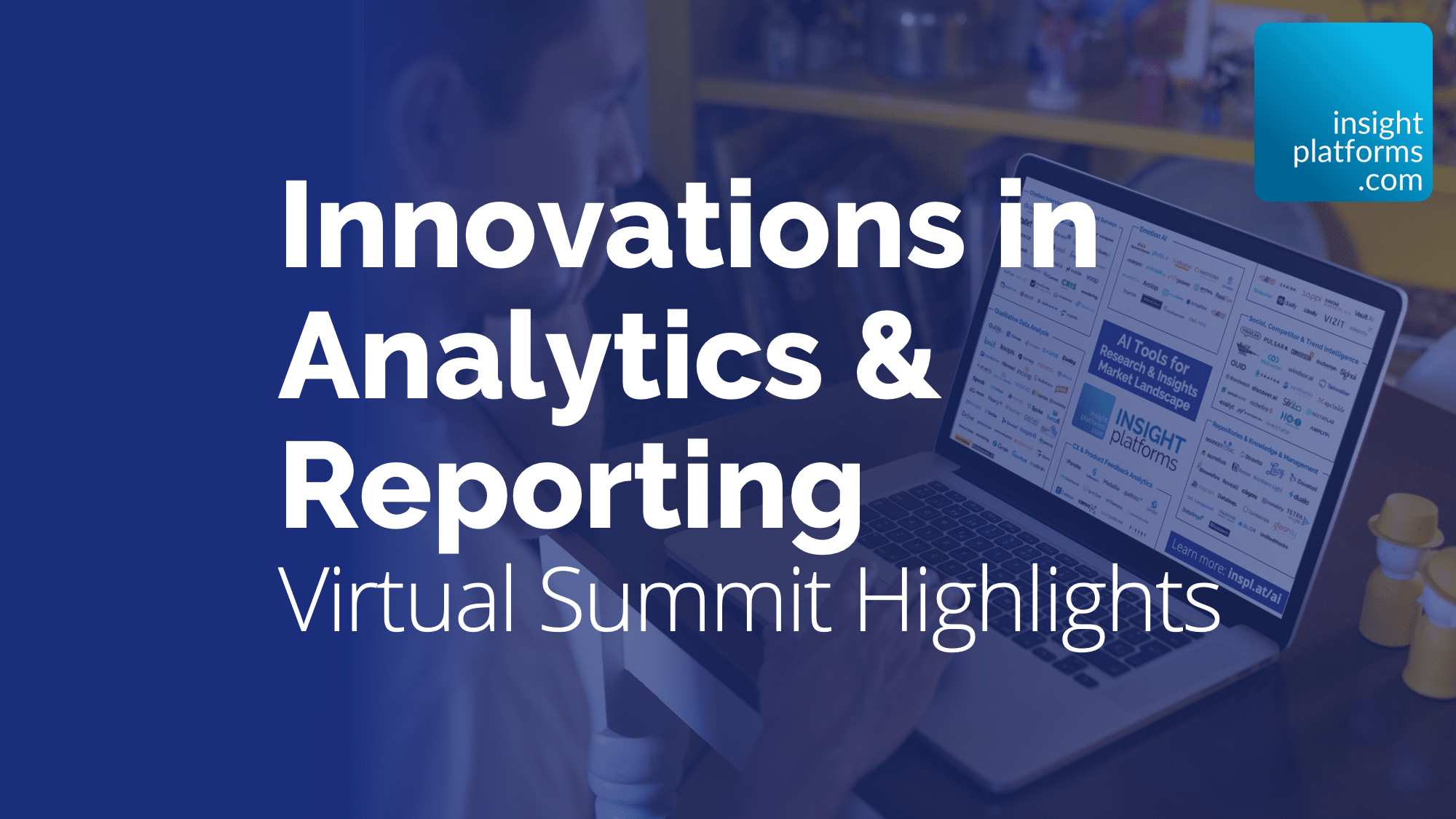
Innovations in Analytics & Reporting – Virtual Summit Highlights
By Insight Platforms
- article
- Automated Reporting
- Reporting
- Data Analytics
- Qualitative Data Analysis
- Text Analytics
- AI
- AI Agents
- Generative AI
- Data Visualisation
- Survey Analysis
- Cross-tabulation
- Qualitative Research
- Survey Research
- Conversational AI
- Chatbots
- Synthetic Respondents
- End-to-End Survey Platforms
- Video Research
- Video Analytics
The Analytics & Reporting Summit was a three-day virtual event in October 2024 with over a dozen sessions on the latest innovations in analytics, reporting and storytelling for research & insights.
Read a quick recap for each session below and click the individual session links to watch the recordings.
Find more information about the summit here:
The Analytics & Reporting Summit
Day 1 of the Analytics & Reporting Summit 2024
Using AI to Improve Accuracy and Scope of Market Research
In the opening session of the Insight Platforms Analytics and Reporting Summit, Glimpse’s Neil Dixit explained how AI makes it easier to join multiple sources of insight together: survey data, qualitative, social, operational etc.
The Glimpse platform can use this data to build digital twins deterministically (using that first-party) or probabilistic with LLM data.
He described how HubSpot used this approach to build synthetic customer personas and have dynamic conversations with their data.
Adam Bai then interviewed two industry experts.
Nick Nyhan explained how AI gets you beyond demographic proxies in segmentations; how synthetic data isn’t right for every use case; and how young marketers can thrive in an AI-powered world by using data to become “narrative leaders” for their organisations.
Radi Hindwani of InMoment talked about AI’s role in combining data signals: half the questions companies have could be answered by existing data if it were connected in the right way. He also explained how research and insights teams are becoming change management consultants – delivering advice on a foundation of data.
Watch the replay here:
Using AI to Improve Accuracy and Scope of Market Research
Insights Chatbot: Replacement for Dashboards or Just a Gimmick?
Maurice Gonzenbach of Caplena delivered an excellent session. He showed how the Caplena platform can combine an analysis Copilot / Chatbot with data visualisation.
He demonstrated how LLMs can be the “translation layer” between users’ prompts and the detailed analysis requirements for decoding CX feedback, open-ended survey responses and other sources of unstructured data.
Interestingly, the primary users in the beta rollout are power users, who find that the conversational interface helps them iterate and dig deeper into their analysis.
Watch the full session recording here:
Insights Chatbot: Replacement for Dashboards or Just a Gimmick?
AI in Action: Transforming Qualitative Research for More Powerful Insights
Recollective and PA Consulting led a practical session on AI for Qual research. Dana Cassady explained how qual analysis can still be tricky, despite the growth in online tools: it takes a lot of time to make sense of data in multiple formats and resolve conflicts between diverse sources and participants.
Fiona MacGregor and Holly Riedlinger shared a bunch of use cases for qualitative AI tools from different projects in alcohol, retail and financial categories
- Conversational analysis with transcripts and summaries of video depth interviews
- Using AI to generate lists of benefits and barriers, then codifying them in the qualitative data
- Surfacing nuanced evidence to support key themes and resolve apparent conflicts between qual and quant data
- Dealing rapidly with client feedback and follow-up queries – like finding more comments to support a conclusion.
Watch the full session replay here:
AI in Action: Transforming Qualitative Research for More Powerful Insights
Automated Insight Reporting Done Right!
Rachel Cummins of Directions Group Research and Benjamin Rietti of E-Tabs explained how automated reporting powers an efficient research process. Research data is complex, messy and nuanced – it’s not as simple and consistent as most BI, SaaS and auto-charting tools assume.
Directions needed something user-friendly, scalable, flexible, fast and compatible with their existing ecosystem. They also had demanding specs for stats, sig testing, multi-wave roll-ups etc.
They used E-Tabs on scorecards and trackers initially, then expanded to custom outputs like MaxDiff, TURF and penalty analysis; they ended up with a 30% reduction in spend and 50% in hours saved.
Benjamin Rietti talked about the tricky demands in market research – editable PPTs, low base size flagging, custom nets and rollups, wave-on-wave comparisons – and how it’s not easy to get this stuff out of standard data viz tools.
Watch the replay here:
Automated Insight Reporting Done Right!
Get Insights In 24 Hours: How AI Co-Workers Power Rapid End-to-End Research
In the last session on day one, Justin Ibbett introduced FocalData’s “AI Co-Worker” solution for end-to-end research. Insights teams face too many demands with not enough resources; DIY tools aren’t filling enough of this the gap.
FocalData’s AI agents model works a bit like a full automated research agency:
- Articulating research objectives
- Creating research briefs
- Drafting research questions and discussion guides
- Conducting real-time feasibility and fieldwork costing
- Sourcing relevant respondents from integrated panels and other sources
- Conducting semi-structured online interviews with AI moderators
- Providing an “Ask AI” interface for analysis and reporting.
We had the theory, a demo and a good discussion about what this means for in-house teams, individual researchers and the agency business model.
Watch the replay here:
Get Insights In 24 Hours: How AI Co-Workers Power Rapid End-to-End Research
Day 2 of the Analytics & Reporting Summit 2024
How to Analyze Qualitative Insights with Generative AI
In the first session on day two, Erica Dinger of Voxpopme explained the benefits of AI for qualitative video research analysis.
She classified these in three buckets:
- Capture: writing questions for discussion guides and translating drafts into consumer-friendly language
- Analyse: understanding hours of video feedback in minutes, interrogating your insights with conversational AI
- Share: publishing findings for stakeholders in creative formats like automatic showreels.
AI transforms qualitative analysis by replacing traditional time-intensive processes; enabling deeper, iterative follow-up; and transforming insights with meta-learnings across projects. AI does have limitations: it’s a tool; it can hallucinate; researchers need to bring their domain expertise to make it effective.
Erica’s top tips included being specific with prompts for AI analysis; providing relevant business context; and verifying the insights through the lens of your own experience.
Key takeaways from this session: AI allows you to scale qualitative research; to conduct it more quickly; and to transform your insight capability. AI + research experts = the new power couple.
Watch the session replay:
How to Analyze Qualitative Insights with Generative AI
Researcher-Driven AI: Making Report-Ready Insights a Possibility at Your First Pass
Aneesh Dhawan presented the latest innovations in Knit’s Qual/Quant AI solution, an end-to-end process that delivers ‘report-ready insights’ — agency-quality topline outputs — at the timescales and costs of a DIY platform.
Knit is designed to meet the specific needs of the agencies and brands using it by incorporating contextual knowledge about the structure, needs, and business objectives of individual organizations.
Knit’s inputs are business and research objectives for a given project. Its AI then generates a questionnaire design, devises an analysis plan, conducts quant/qual fieldwork using an integrated panel of 10 million respondents, generates reports, and provides conversational data analysis for further deep dives.
Topline reports have the look and feel of agency outputs with charts, headlines, and commentary. Everything is editable and can be tweaked and updated by researchers.
End-to-end projects typically complete in 2–3 days.
Watch the replay and discussion here:
Researcher-Driven AI: Making Report-Ready Insights a Possibility at Your First Pass
From Efficiency to Impact: The Power of Advanced Text Analytics
Fathom’s Tovah Paglaro and Michiah Prull talked about advanced text analytics. They explained how text analytics can frustrate users with vague themes, a lack of context, inaccuracy, and the need for lots of manual work.
They drew the contrast with approaches that deliver specific themes with more actionable details; the key is better business context and Humans in the Loop. With case studies from Netflix, Warby Parker and Emerald Research Group, they explored the three stages of maturity in text analytics:
Stage 1: Efficiency and saving time; this can yield huge commercial benefits even if you don’t get to stage 2 or 3.
Stage 2: Combining coded data with other variables — CX, brand tracking, segmentation — for predictive analytics.
Stage 3: Evolving the entire research culture and practice to erase the boundaries between qual and quant research and unlock new methods.
Watch the replay here:
From Efficiency to Impact: The Power of Advanced Text Analytics
Lightning Demos
Blix AI
Blix AI is a verbatim coding solution for survey data.
The technology is based on semantics, not keywords, so it attempts to understand the underlying meaning in the language. This makes it much easier to create a codebook for your data; it also helps to overcome common challenges such as spelling mistakes and variations in expression.
It can handle multiple languages within the same codebook and it’s very easy to make updates to the codebook. Output data formats include options for both binary and categorical variable structures to suit external analysis tools like SPSS or Tableau.
Watch the demo here:
Forsta Visualizations
Forsta Visualizations is a storytelling solution for research, insights and customer experience data with dashboards, drill down analysis, and automated creation of PowerPoint slides.
It is infinitely customisable to reflect corporate branding guidelines. Dashboards can update in real-time when connected to live data sources such as continuous tracking surveys or operations data. It includes all the features needed for working with market research data like benchmarking, wave-on-wave comparisons and significance testing.
Users can drill down for deeper analysis by clicking on the visuals; embedded AI tools summarise key findings and generate headlines; text analytics and sentiment analysis for open-ended data is built-in; and layered user permissions help ensure data is only accessible to authorised users.
See the demo here:
Indico Labs
Indico Labs is a report automation solution used by in-house teams like The Financial Times and research agencies such as BAMM.
The SlideGen tool reads existing branded slides and then allows you to autopopulate and autogenerate those slides by uploading banner tables and crosstabs. You can change the data and toggle everything on and off in SlideGen’s online app without needing to use Excel.
You can also repopulate existing slides with new data using the Switch Data feature; and there’s an AI Research Assistant for PowerPoint that allows you to explore data and generate commentary.
Watch the demo here:
ResearchWiseAI
ResearchWise AI is an AI-powered solution for generating reports from survey data.
Users import a survey dataset in CSV or SPSS format; automated analysis summarises key findings and visualises results in charts; reports can be exported as fully editable PowerPoint files.
The online tool also includes a conversational interface for querying the survey data in natural language and receiving summarised responses with links to relevant tables and charts.
Watch the demo here:
Day 3 of the Analytics & Reporting Summit 2024
5 Essential AI & Automation Hacks to Accelerate Your Global Online Community Analysis
Nick Campbell led this session with practical tips for applying AI and automation tools to analyse qualitative research in online communities.
He explained how qualitative researchers now have more advanced tools than ever for enhanced thematic analysis of large volumes of unstructured data.
His 5 key hacks for embedding AI and automation in qualitative community analysis are:
- Designing research so that it is optimised for AI: build your projects with AI analysis outputs and reporting in mind.
- Conducting AI-powered summarisation and thematic analysis to accelerate the early stages of understanding the data.
- Transcribing and translating inputs; can be especially powerful when conducting international research and can reduce significantly the amount of time involved.
- Generating rapid video outputs using automated showreel generators and easy editing tools to create video content for reporting and stakeholder engagement.
- Saving time and money – there are many ways in which AI can be applied to reduce costs (e.g. with external suppliers) and to save time by reducing the number of hours spent on a project.
Watch the incling session replay here:
Speed to Insights, Without Compromise
Troy Harrington and Mark Scheckner of Pollfish explained how modern AI technology is powering faster-than-ever survey research.
They showcased:
- Pollfish’s AI Survey Builder, which can generate draft survey questions as a starting point for a project
- How to conduct rapid online analysis with Pollfish’s DIY reporting tools
- The power of combining rapid survey research with high quality samples such as behaviourally profiled data from the Prodege community
- Sophisticated analysis and data visualisation using Prodege’s “Insights Builder” deep dive analysis and data visualization solution.
Find out more here:
Speed to Insights, Without Compromise
How to Use AI for More Efficient Qual Analysis
Sago’s Justin Perkins and Nile Freeman showed how the latest innovations in AI for qualitative research are enhancing Sago’s QualBoard solution.
QualBoard was an early pioneer in the use of machine learning to enhance qualitative research, and the new AI features are deeply integrated into the existing tools and workflow.
They demonstrated how to analyse multiple qualitative videos simultaneously, and showed how the new “Query AI” solution benefits researchers with natural language prompts to mine their data, citations and sources for all AI-based analysis, and the ability to filter by respondent attributes and moderator tags whilst conducting analysis.
Watch the full session here!
How to Use AI for More Efficient Qual Analysis
Insights to Action Workshop: AI Agents for Innovation
Vurvey’s Chad Reynolds and Andrew Conrad gave a live demonstration of the Vurvey AI Agents solution.
Vurvey’s agents can be trained with any input data; typically, they use consumer videos to train agents that reflect the attributes of a given demographic or target audience.
Vurvey’s video survey campaigns capture rich feedback which can then be decoded not just for the content of the language – but also the tone of voice, facial expression, and other nonverbal cues. This helps to build more advanced AI models that understand expressions and emotions beyond the surface meaning in the spoken words.
These agents can then be queried using natural language; they answer based on their training data and other context or knowledge base inputs.
Beyond consumer agents, the Vurvey platform also allows users to build (for example) innovation experts, creative experts, or other members of an in-house team. These agents can then be connected in multi-agent workflows to conduct ideation workshops for new product development.
Find out more here:



